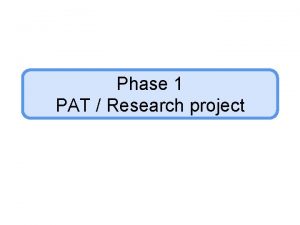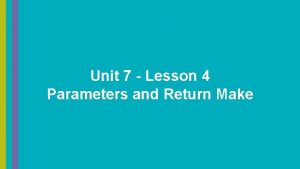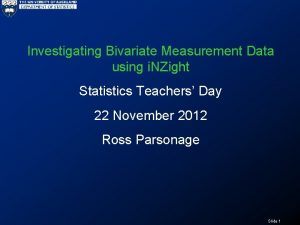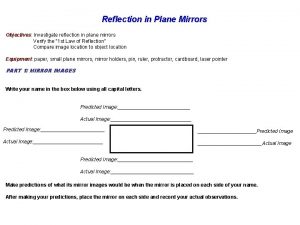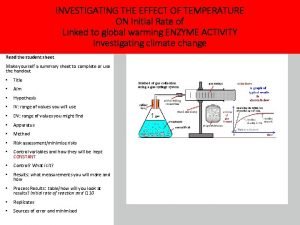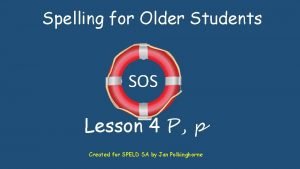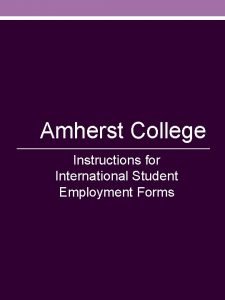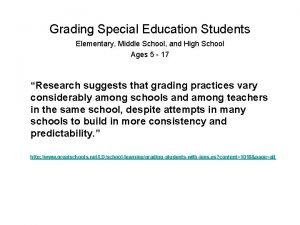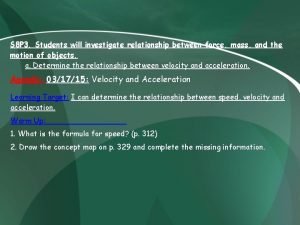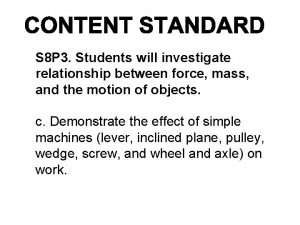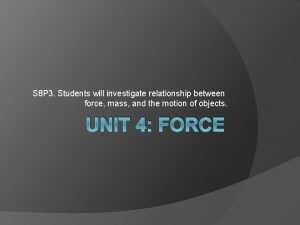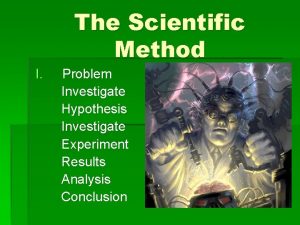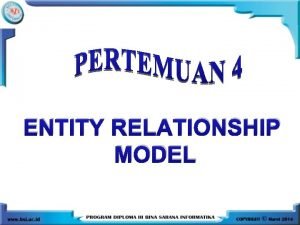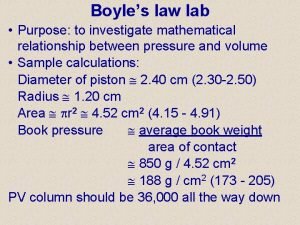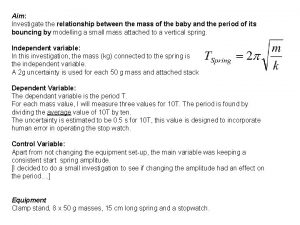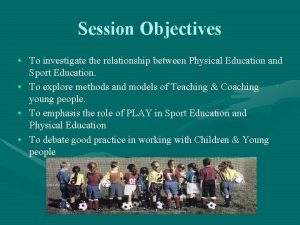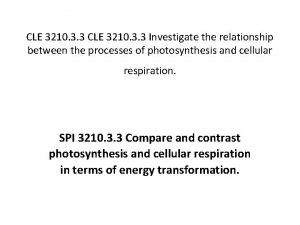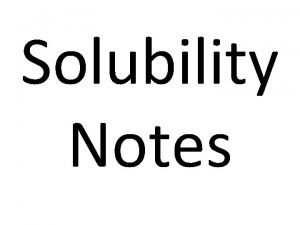S 8 P 3 Students will investigate relationship














- Slides: 14

S 8 P 3 Students will investigate relationship between force, mass, and the motion of objects.

Determine the relationship between velocity and acceleration Velocity is a speed in a specific direction. Example: Sam is walking east at a speed of 3 m/s. Joe walking north at a speed of 3 m/s would have the same speed but not the same velocity.

Acceleration is a measure of how quickly the velocity is changing. If the velocity does not change, there is no acceleration. The word acceleration is commonly used to mean “speeding up”, however, acceleration refers to any change in velocity (speed or direction).

Acceleration 1. Acceleration in the same direction- the speed of the object increases. The car speeds up. 2. Acceleration in the opposite direction- The car slows down. Slowing down is a negative acceleration. 3. Acceleration at a right angle- The direction of the car changes, but its speed does not change.

Demonstrate the effect of balanced and unbalanced forces on an object in terms of gravity, inertia, and friction. Net force is the overall force acting on an object when all the forces are combined. Balanced forces have the same effect as no force at all. An unbalanced force can change the motion of an object. Inertia is the resistance of an object to a change in the speed or the direction of its motion “Newton’s first law”.


Newton’s first law- States that objects at rest tend to stay at rest, and objects in motion will continue in motion unless acted on by an outside force. Newton’s second law- Force equals mass times acceleration. F=ma Newton’s third law- States that every time one object exerts a force on another, the second object exerts an equal and opposite force on the first object.

Demonstrate the effect of simple machines (lever, inclined plane, pulley, wedge, screw, and wheel and axle) on work. • Work occurs when a force causes an object to move in the direction of the force. • Simple machines change the size or direction (or both) of the input force and make work easier. Using a simple machine does NOT mean you do less work.

Simple machines are six machines on which all other mechanical machines are based. A lever is a solid bar that rotates, turns, around a fixed point. First Class Second Class Third Class

Wheel and axle A wheel and axle is a simple machine made up of a wheel attached to a shaft, or axle.

Pulley A pulley is a wheel with a grooved rim and a rope or a cable that rides in a groove.

Inclined Plane An inclined plane is a simple machine that is a sloping surface.

Wedge A wedge is a simple machine that has a thick and a thin end.

Screw A screw is an inclined plane wrapped around a cylinder or cone to form a spiral.
 How to investigate a problem
How to investigate a problem Lesson 4: parameters and return make
Lesson 4: parameters and return make Nzight
Nzight Who is rumored to have killed laius?
Who is rumored to have killed laius? Investigate reflection
Investigate reflection Inital rate
Inital rate Rizal champion of filipino students
Rizal champion of filipino students Toxic relationship scenarios
Toxic relationship scenarios Difference between rm and crm
Difference between rm and crm Topics to write articles for school magazine
Topics to write articles for school magazine Sos spelling for older students
Sos spelling for older students Umass amherst ssn
Umass amherst ssn Students diversity in motivation
Students diversity in motivation Objective in research
Objective in research Grading special education students
Grading special education students
